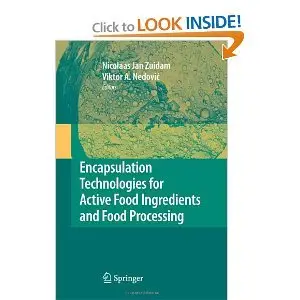Encapsulation Technologies for Active Food Ingredients and Food Processing
Springer; 1st Edition | November 16, 2009 | ISBN-10: 1441910077 | 400 pages | PDF | 10.7 Mb
Springer; 1st Edition | November 16, 2009 | ISBN-10: 1441910077 | 400 pages | PDF | 10.7 Mb
Consumers prefer food products that are tasty, healthy and convenient. Encapsulation is an important way to meet these demands by delivering food ingredients at the right time and right place. For example, encapsulates may allow flavour retention, mask bad tasting or bad smelling components, stabilize food ingredients and/or increase their bioavailability. Encapsulation may also be used to immobilise cells or enzymes in the production of food materials or products, such as fermentation or metabolite production.
This book provides a detailed overview of technologies for preparing and characterisation of encapsulates for food active ingredients to be used in food products, food processing or food production. The book is aimed to inform people who work in the academia or R&D of companies on delivery of food compounds via encapsulation and on food processing using immobilized cells or enzymes, with both a limited and an advantaged knowledge of the field. The structure of the book is according to the use of encapsulates for a specific application. Emphasis has been put to strategy, since encapsulation technologies may change. Most chapters include application possibilities of the encapsulation technologies in specific food products or processes.



